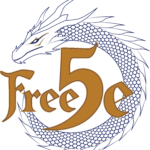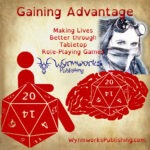Isn’t #DnD free already? #Free5e

The most common question we get about Free5e is, “Isn’t D&D already free to play?”
Technically, yes, the 2014 Basic Rules are available in PDF, and the 2024 Free Rules are on D&D Beyond, but both are limited. Like a drug dealer’s, “The first one is free,” once you’re addicted, it gets expensive, about $50 for each core book, so if you don’t have a group to join, you’ll need about $150 for the set. That’s not to disparage the free options, as they’re better than nothing, but a sample isn’t the whole experience.
Neither of those free options are available as print books. The 2024 Free Rules aren’t even available as PDF — you need an active Internet connection to use them on D&D Beyond. And only the D&D Beyond versions have illustrations.
Because Free5e has an open license, it can be translated and adapted to any context. We will make as many formats available as possible to make it easy to adapt. (The 2014 rules were translated into 8 languages. Mandarin Chinese and Hindi are the 2nd and 3rd most spoken languages in the world, yet they’ve never had a D&D translation. This makes that possible.) Even though Wizards promised a braille version, it still hasn’t happened, but Free5e will have a digital braille version on release day. We’ve already been contacted by schools for the blind who are eager for copies.
And then there’s the difference of what’s included:
Free5e Contents Comparison
| Feature | Free5e | 2014 Basic Rules | 2024 Free Rules | D&D 2014 Core | D&D 2024 Core |
|---|---|---|---|---|---|
| Ancestries/Species | 9 | 9 | 4 | 9 | 10 |
| Cultures/Subraces | 21 | 8 | 3 | 9 | 14 |
| Classes | 12 | 12 | 12 | 12 | 12 |
| Subclasses | 24 | 12 | 12 | 38 | 48 |
| Backgrounds | 1 | 6 | 4 | 13 | 16 |
| Feats | 52 | 0 | 15 | 42 | 75 |
| Spells | 323 | 304 | 314 | 361 | 391 |
| Magic Items | 269 | 20 | 124 | 263 | 350 |
| Monsters | 424 | 169 | 138 | 483 | 501 |
| Monster Variants | 140 | 1 | 0 | 0 | 0 |
| Total Monsters | 564 | 170 | 138 | 483 | 501 |
| Monster Templates | 16 | 0 | 0 | 3 | 0 |
This is, of course, not an exhaustive list of features, but it gives you a sense of what you can get for free. Free5e also includes monster-building guidelines to quickly create infinite monsters in a moment, a background-building formula, and other features to help you expand its offerings as the need arises in your game.
Free5e is also built with our commitment to accessibility and inclusion, featuring:
- Culturally respectful language
- Mix-and-match PC ancestries and cultures
- Disability representation options
- Intentionally accessible formats
- Ancestral and Cultural Variants for Monsters
- Compatibility and conversion guidelines for other 5e systems
Help Us Set 5e Free!
Join us March 18th as we launch our Kickstarter campaign to fund this monumental project to set 5e free forever!

